Patella Alta
Patella Alta : Definition
Patella alta or high-riding patella is an anatomical variation and bone malalignment of the patella (kneecap) in relation to the surrounding bones.
The patella is structurally placed higher in the femoral trochlea than it should be. Patella baja or infera is the opposite of patella alta. It is a low-riding patella that is structurally placed lower than it should be.
Causes
Patella alta is not hereditary. It may be caused by overgrowth of the patellar tendon during puberty, resulting to a high-riding patella.
The lateral femoral sulcus prevents lateral patellar subluxation. If the patient has patella alta, this protective feature of the lateral femoral sulcus will not be used [1].
Patella alta may be associated with the following conditions [2]
- Patellar subluxation (recurrent)
- Patellar dislocation
- Chondromalacia of the patella
- Patellar ligament rupture
- Femoral osteomyelitis
- Poliomyelitis
- Cerebral palsy
- Sinding-Larsen-Johansson disease (avascular necrosis of an ossification center of the patella)
- Osgood-Schlatter disease (avascular necrosis of the tibial tuberosity)
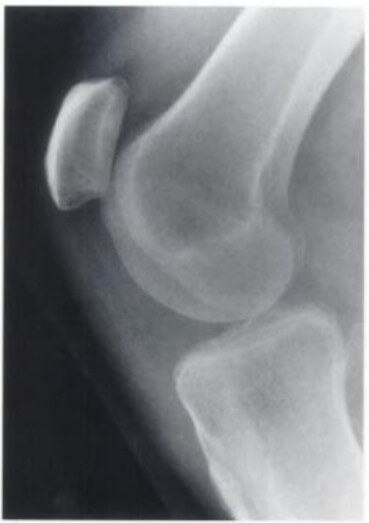
Picture 1: Lateral knee radiography shows complete tear of the tendon in traumatic patella alta.
Image Source: Scuderi GR
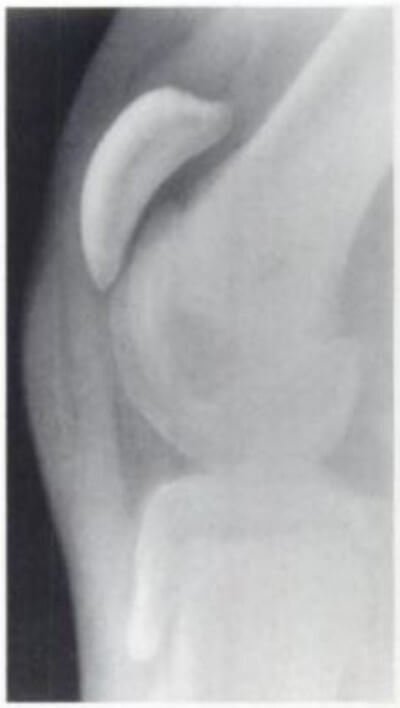
Picture 2: Patella alta in cerebral palsy features a lengthened and high positioned patella due to chronic spasms.
Image Source: Scuderi GR

Picture 3: Patella alta and prepatellar bursitis can be observed in patients with cerebral palsy due to crawling.
Image Source: Scuderi GR
Measurement and Diagnosis
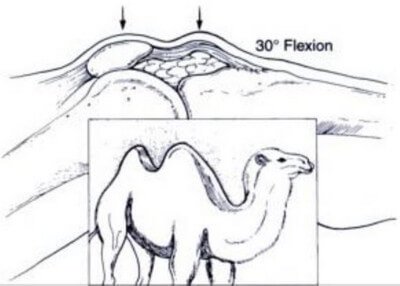
Picture 4: Camel back Sign
Image Source: Scuderi GR, The Patella, Springer Science and Business Media, 1995, p 73
With the patient in standing position, the examiner goes to the patient’s side and assesses for the presence of camel back sign of the knee.
Camel back sign is observed in patients with patella alta. The first hump is the high positioned patella and the second hump is represented by the infrapatellar fat pad or infrapatellar bursa.
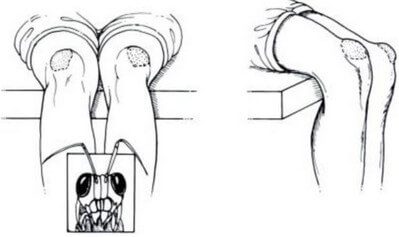
Picture 5: Grasshopper Eyes
Image Source: Scuderi GR, The Patella, Springer Science and Business Media, 1995, p 74
Normally, patellae should be directed towards the front when in a sitting position. In patella alta, patellae are directed upwards.
Grasshopper eyes or frog eyes is seen in patients whose patellae are proximally displaced (patella alta) and externally or laterally rotated (lateral patellar tilt) [3, 4].
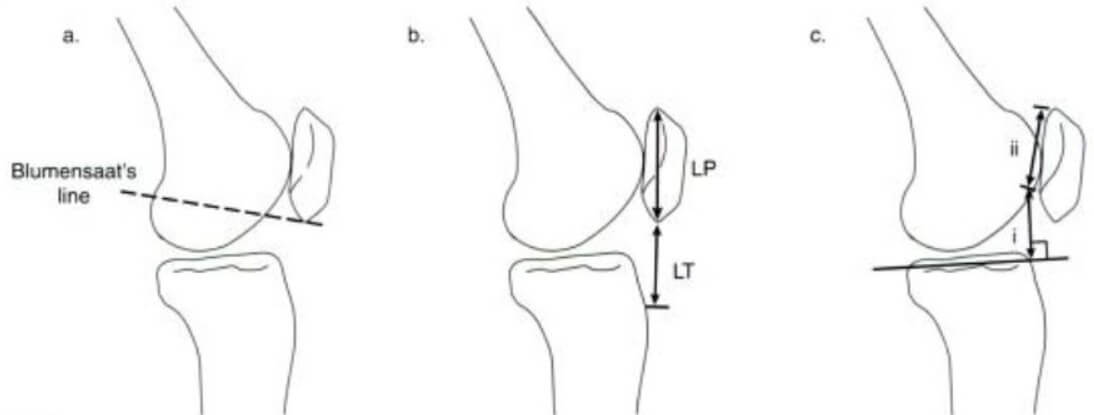
Picture 6: a) Blumensaat’s Line; b) Insall-Salvati Measurement; c) Blackburn-Peel Measurement
Image Source: Paley D, Principles of Deformity Correction, Springer Science and Business Media, 2002, p 569
Blumensaat’s line is an imaginary line formed with 30° flexion of the knee. The inferior border of the patella should be in line with the extension of intercondylar notch.
In Blackburn-Peel measurement, the quotient of (i) tibial plateau to the lower end of the patellar articular surface and (ii) patellar articular surface length is 0.8. If the quotient is greater than 1, the patient has patella alta [5].
In Insall-Salvati measurement, a lateral radiograph of the knee in 30° flexion is obtained. The ratio for the length of patellar tendon (LT) versus length of the patella (LP) is 1, meaning they should be equal. ±0.2 indicates an anatomical variation.
A ratio of 1.2 means LT is longer than LP, which makes the patella located in a higher position than it should be. This indicates patella alta. On the other hand, a ratio of 0.8 indicates patella baja, meaning the LT is short, which makes the patella located in a lower position [1, 6].
A study in Boston University (2010) revealed that a high Insall-Salvati ratio increases the risk of having cartilage damage, bone attrition, and bone marrow lesions. Patella alta and lateral trochlear inclination could be factors that contribute to the development of patellofemoral joint osteoarthritis [7].
Measuring the LT is important because if it is increased, as in the case of patella alta, more flexion than the usual should be performed in order to allow the patella to rest on the trochlea.
Treatment
Persons with patella alta may have patellar pain and gait instability. This warrants the patient to submit himself into treatment or therapy. The goal of treatment is to resume the normal function of the knee and to relieve any forms of discomfort.
Conservative Treatment
Conservative treatment for problems in patella may respond well and may possibly get surgery out of your list of options. Patella alta may be corrected through [8]:
- Manual gliding
- Physical therapy including closed chain strengthening and exercise programs
- Patellar taping
- Braces or sleeves for knees
- Pain relievers
- Ice packs
- Weight loss
Surgery
Tibial tuberosity osteotomy can be performed in patients with patella alta. This solves the problem by moving the attachment of the patellar ligament to the tibia downwards. That way, patella goes down with it.
If an increased quadriceps (Q) angle comes with patella alta, tibial tuberosity osteotomy can correct it too by shifting the bony attachment of the patellar ligament inwards.
Complications of surgery may include infection, stiffness of knee joints, deep vein thrombosis (DVT), nerve injury, and recurrent instability.
Knee splint is applied after surgery and stays with the patient for 6 weeks. The patient is expected to use crutches. Knee movement will be restricted. Weight bearing is limited and is only allowed with the knees straight. Physical therapy and exercise is required after surgery in order to get rid of the pain and swelling and resume usual muscle control. This will also prevent further complications. Recovery period is around 3-6 months [9].
References:
- Hammer WI, Functional Soft-tissue Examination and Treatment by Manual Methods, Jones & Bartlett Learning, 2007, pp 328-329
- Burgener FA & Kormano M, Differential Diagnosis in Conventional Radiology, Thieme, 2011, p 317
- Scuderi GR, The Patella, Springer Science and Business Media, 1995
- Magee DJ, Orthopedic Physical Assessment, Elsevier Health Sciences, 2008, p 737
- Paley D, Principles of Deformity Correction, Springer Science and Business Media, 2002, p 569
- Baratz M et al, Orthopedic Surgery: The Essentials, Thieme, 1999, p 544
- Stefanik JJ, Patella Alta and Its Relationship with Patellofemoral Joint Alignment and Osteoarthritis, Boston University, 2010
- http://www.genufix.com/patella_problems1.htm
- http://www.kneesurgeon.com.au/patella-trochlear-dysplasia.html
Published by Dr. Jackie Te RN, MD under Anatomy and Body.
Article was last reviewed on January 12th, 2022.

